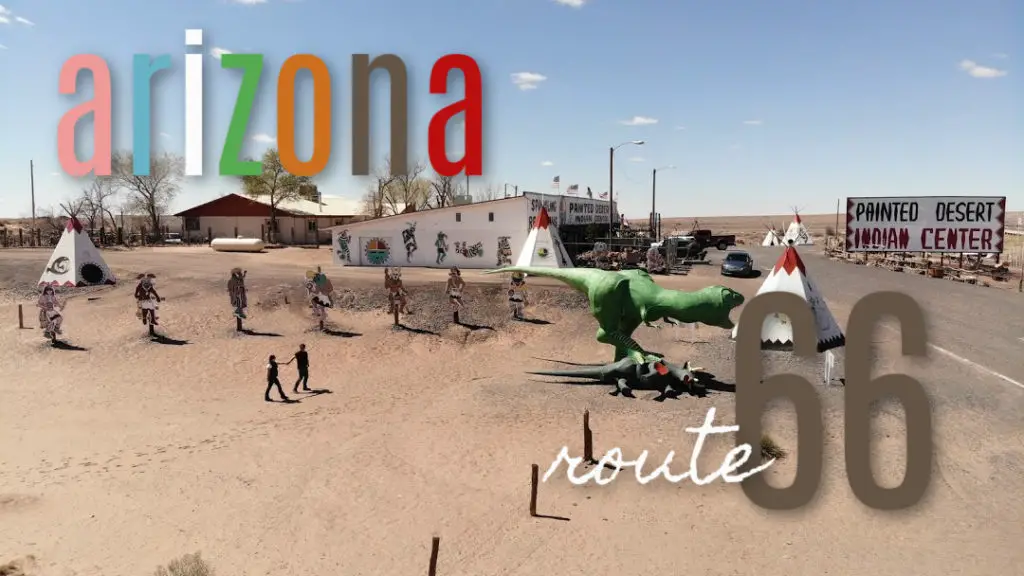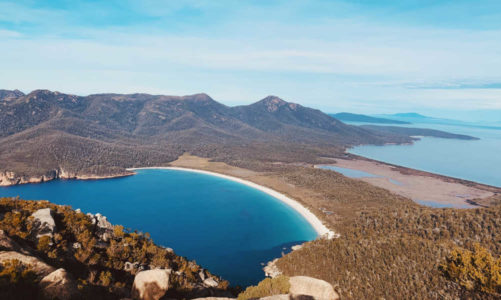Arizona Route 66 is known for its historic and scenic roadside attractions and several kitschy super-sized sculptures. Scattered throughout the drive, these giant structures are uniquely Route 66. A fun thing to do along the way is to see how many you can spot. Route 66 diehards will love taking a photo next to each one of these unique pieces of roadside art.
Sit-On-Me Chuckwalla > Kingman
Chuckwallas are large lizards found primarily in the desert regions of northern Mexico and the southwestern United States. Created by artist Solomon Bassoff and located in Kingman, is this 1,300-pound, 7-foot-long lizard sculpture. Named the Sit-On-Me Chuckwalla, it was made in part for the City of Kingman’s Art in Public Places program.
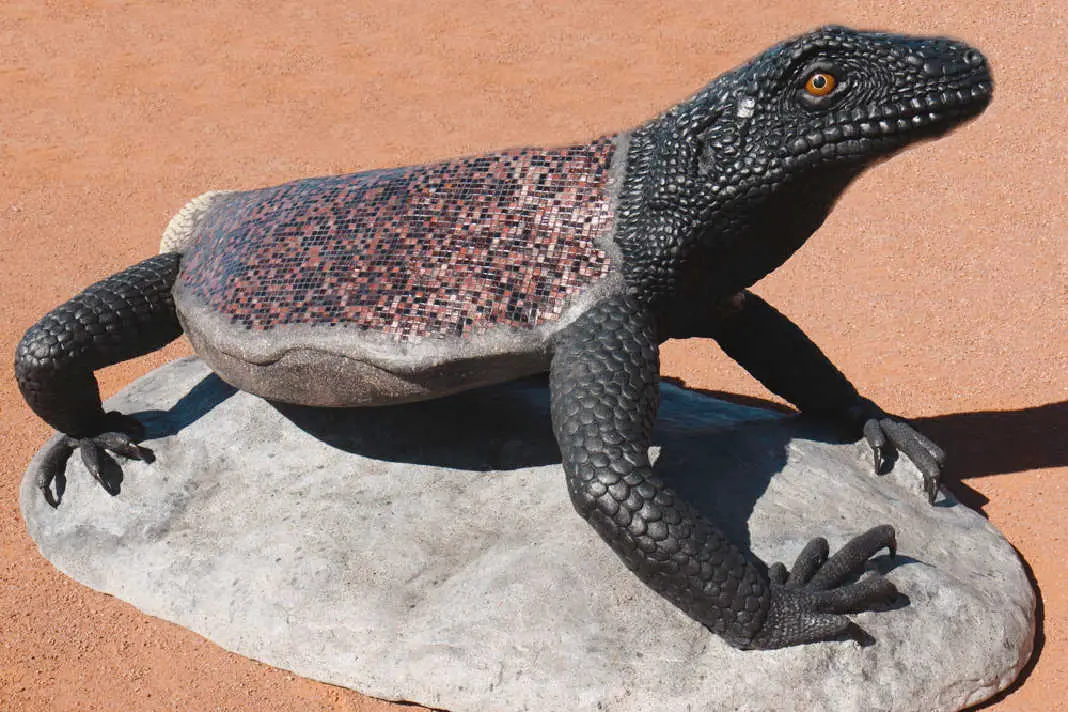
The Sit-On-Me Chuckwalla is made from concrete and was unveiled on February 9, 2018. It has glass eyes, bronze claws, and a body covered in mosaic glass tiles. Commonly used during the construction of bathrooms, these popular materials were regularly used during Route 66’s heyday.
Giganticus Headicus > Antares
Just 15 miles east of Kingman, Giganticus Headicus is a popular photo stop at the corner of Arizona Route 66 and Antares Road. Artist Gregg Arnold moved to the area in 2004. He constructed the piece because “the place looked like it needed something like this.”
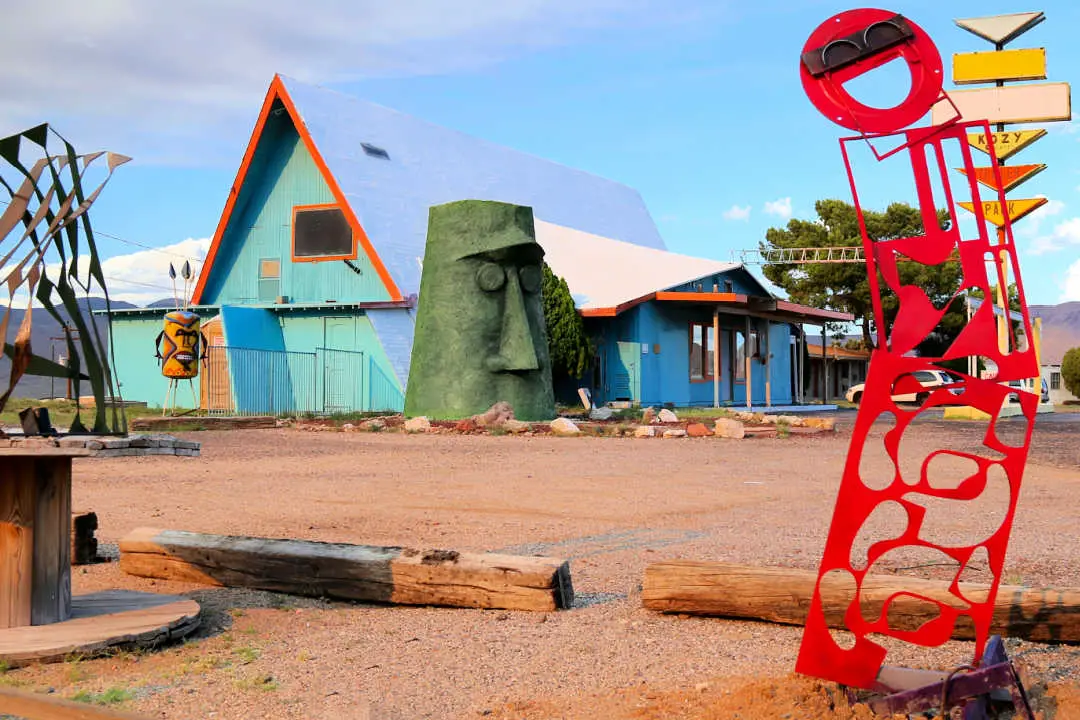
The massive Easter Island Head is made of metal, wood, chicken wire, Styrofoam, and cement. While you’re there, stop into the Route 66 Antares Road Visitor Center which includes a gift shop, convenience store, restaurant, and picnic area. Miniature replicas of Giganticus Headicus are available for purchase inside the souvenir shop.
Muffler Men > Flagstaff
Muffler men are an iconic piece of Americana. Of course, the sculptures that remain on Arizona Route 66 are typically a must-see stop. However, tracking them down in Flagstaff is quite the feat!
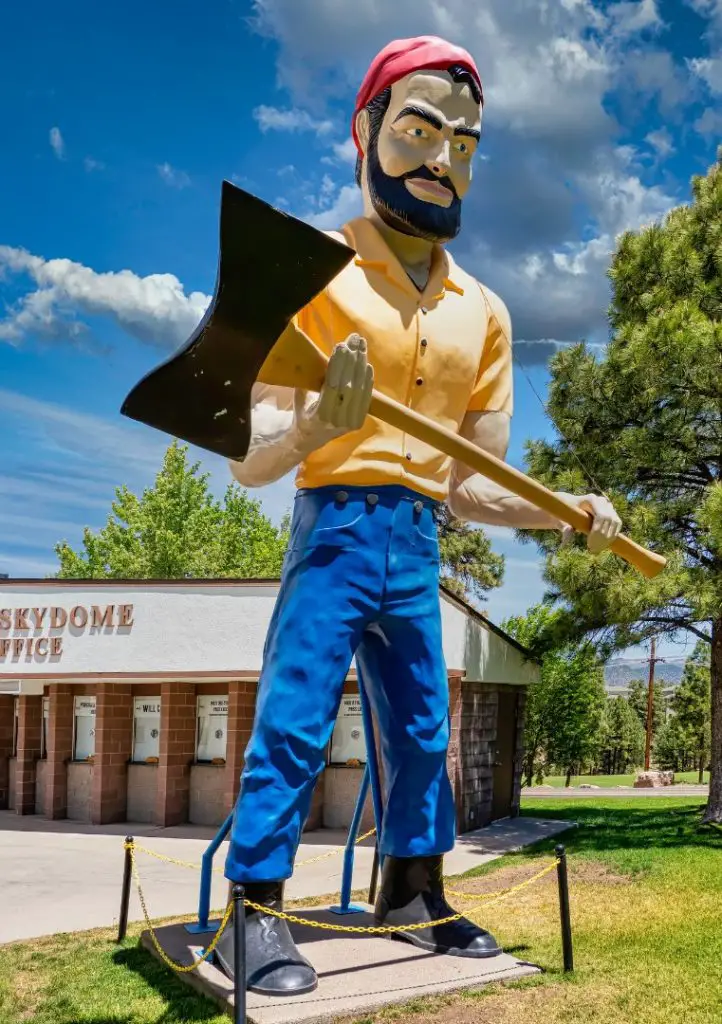
This is mainly because the city’s Muffler Men frequently move in and out of storage and/or get repaired. As a result, they’ve become difficult to track down.
Brief History of the Muffler Men
Around 1963, California’s International Fiberglass made and sold Louie the Lumberjack to the Paul Bunyan Café on Milton Road. Legend has it that this was the very first muffler man to roll off the assembly line in 1962. Later, when the establishment became The Lumberjack Cafe, a second fiberglass statue was purchased.
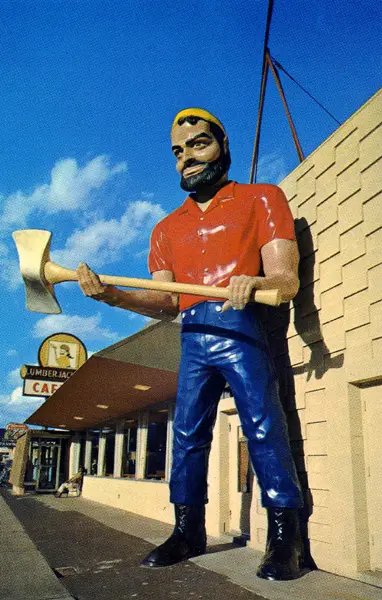
In 1973, when the restaurant changed hands and its name to Granny’s Closet, the Zanzucchi family donated the two identical lumberjack statues to Northern Arizona University (NAU). The family, supporters of NAU Athletics, knew the Louies would serve as fantastic symbols of school spirit for the community. However, they decided to keep the smaller, wooden Louie to stand as an eye-catching landmark outside their business.
Upon receiving the gifted mascots, NAU placed the first statue outside Lawrence Walkup Skydome and the second one inside the sports dome.
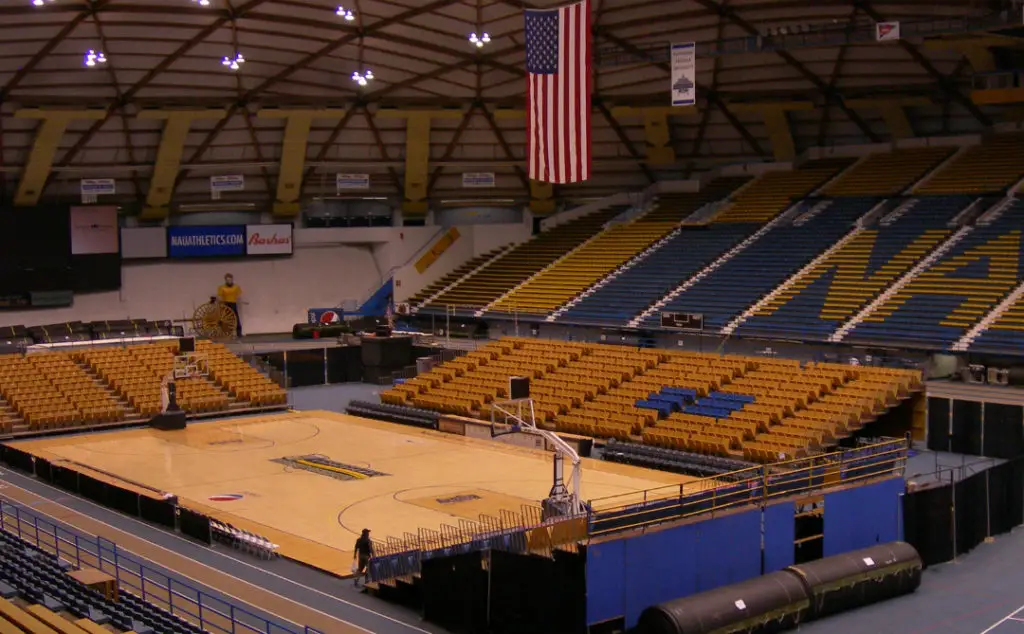
In September 2018, the indoor stadium underwent renovations and the historic statue was placed outside. Mistakingly assuming the outdoor location near Facility Services was safe and secure, Louie the Lumberjack statue was vandalized, resulting in its beheading.
Police speculate that the crime took place sometime between September 21 and October 12, most likely as a homecoming prank. There is no other information about the vandalism. Unfortunately, without the original head, the statue cannot be repaired. In retrospect, although the lumberjack was big and cumbersome, many have stated that not properly securing the historic statue during the renovations was “boneheaded.”
Route 66 Louie
Today, along Arizona Route 66, travelers can still see the 10-foot “Little Louie” in downtown Flagstaff. Made from wood and restored by Wally Baird in 2009, it sits next to the old Granny’s Closet restaurant, which closed in late 2016.
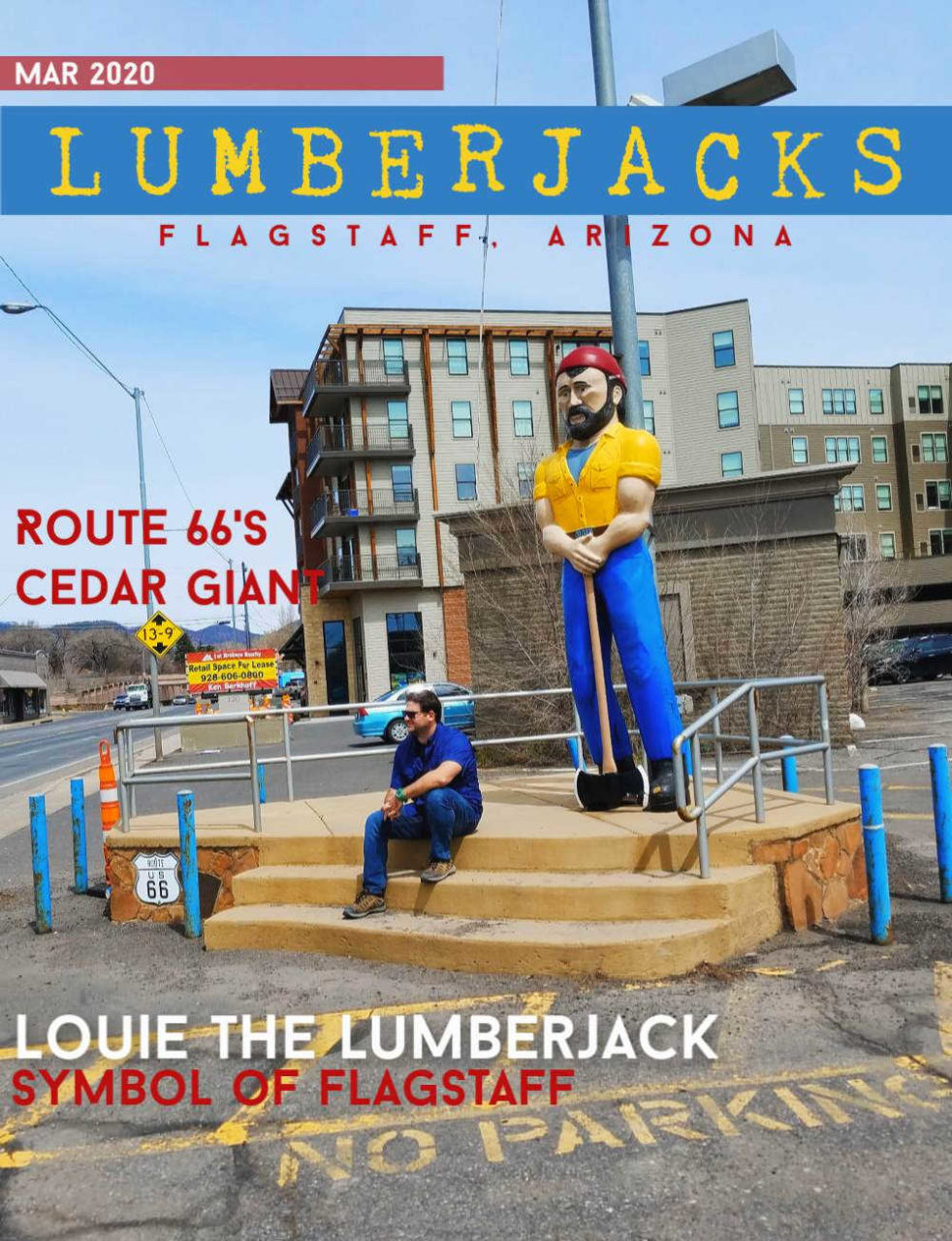
Over time, just about everything was put up for auction and/or cleared out. However, the family saved the bright red tractor and the lumberjack statue. Sorrowfully, the tractor has now disappeared. Nevertheless, travelers will find the wooden lumberjack statue directly on Arizona Route 66 Flagstaff.
Giant Rabbit > Joseph City
Jack Rabbit Trading Post’s Giant Rabbit is one of Arizona’s best roadside attractions. The huge fiberglass rabbit invites travelers to saddle up at this iconic Arizona Route 66 stop. Capturing a photo with the rabbit is so Insta-worthy that there’s an entire page dedicated to visitors’ images.
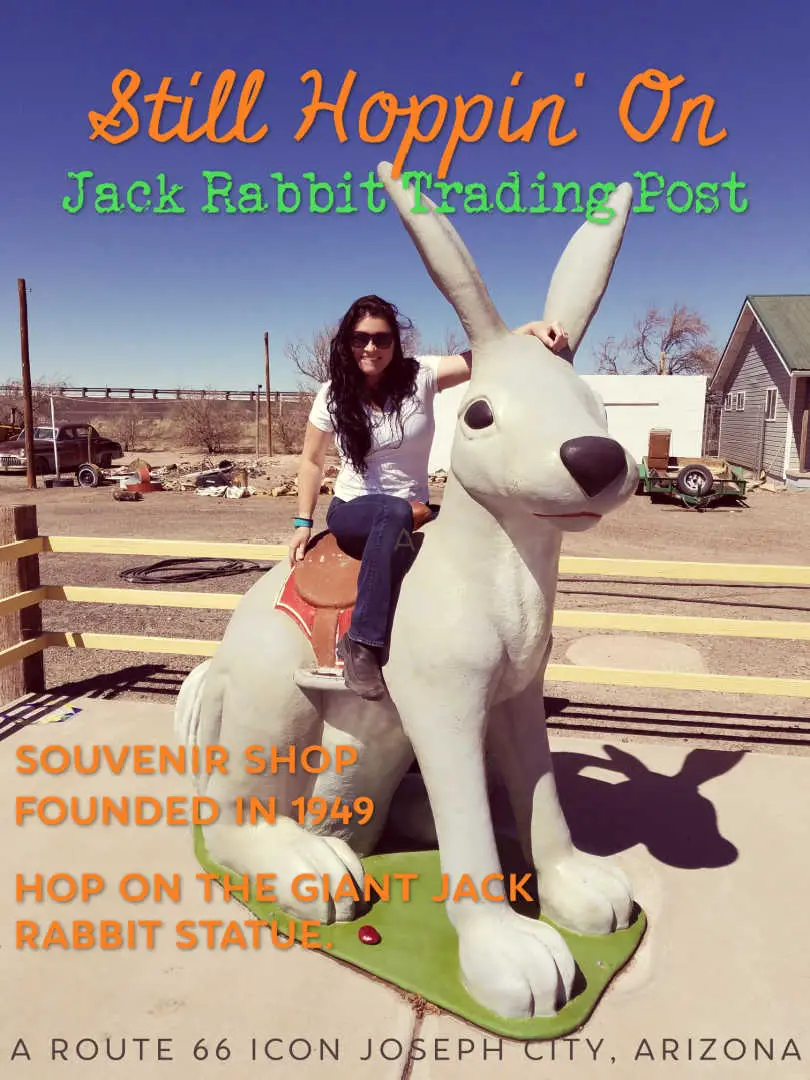
The outpost opened during the 1940s. It’s mainly known for its Wall Drug-style signage and “Here It Is” billboard. Some describe the Giant Rabbit as Route 66 kitsch at its finest.
Dinosaurs > Holbrook
In the Painted Desert Indian Center and the Petrified Forest National Park, you’ll catch glimpses of dinosaurs roaming the land as you make your way down Route 66. In fact, this is where you’ll find America’s oldest dinosaur bones.
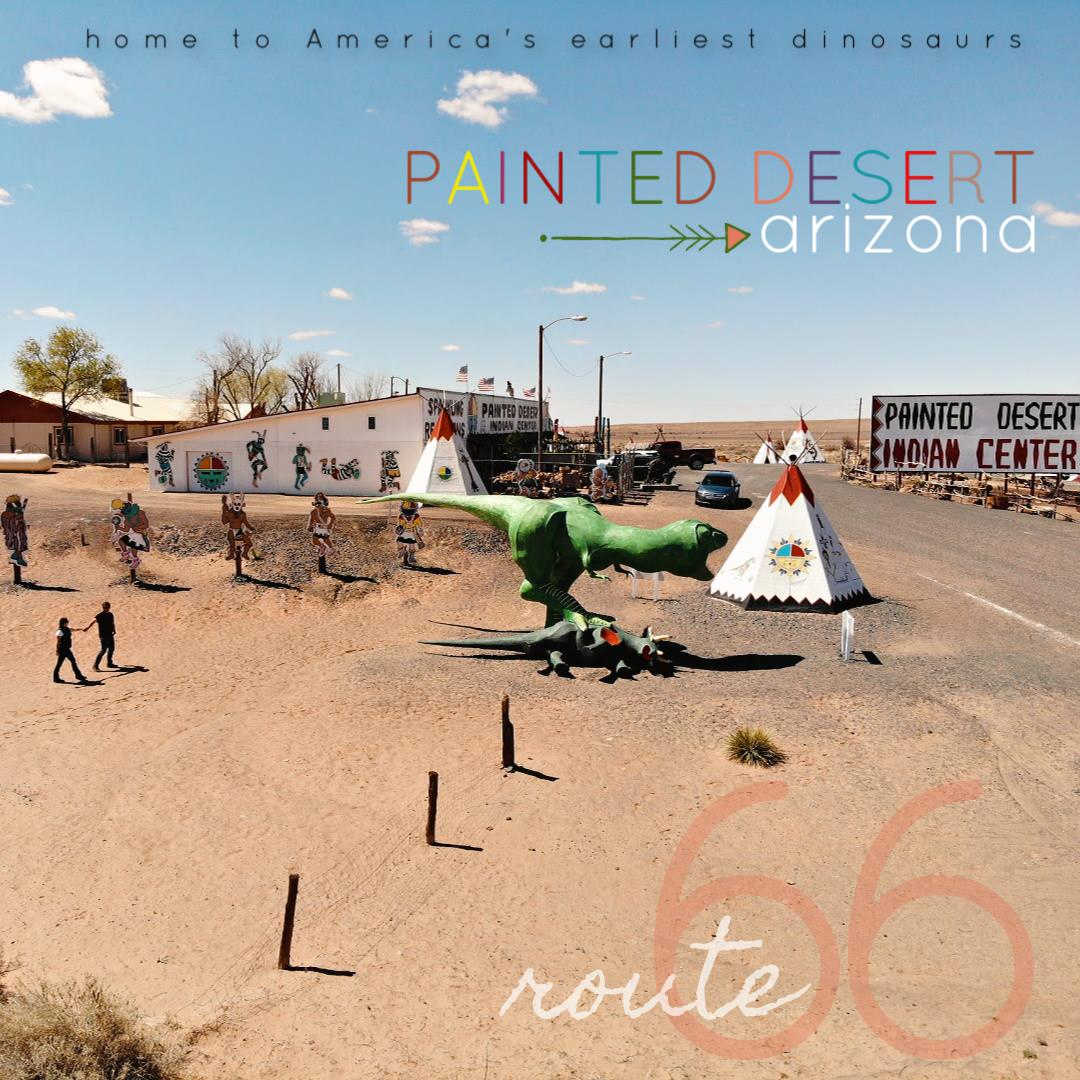
Considered the dinosaur capital of the world, Holbrook has concrete and fiberglass giant dinos on display throughout the town. For instance, The Rainbow Rock Shop has the largest collection which took the owners over 20 years to create. As a result, the Painted Desert Indian Center offers some of the best Arizona Route 66 photo opportunities.
Indian Head > Holbrook
Carved from a single Ponderosa Pine, a giant Indian head sculpture rests behind the Winslow Visitor Center. Hungarian Sculptor, Peter Wolf Toth vowed to carve a Native American statue in every state to pay tribute to the tribal people of North America. In addition, there are two statues in Canada and one in Hungary.
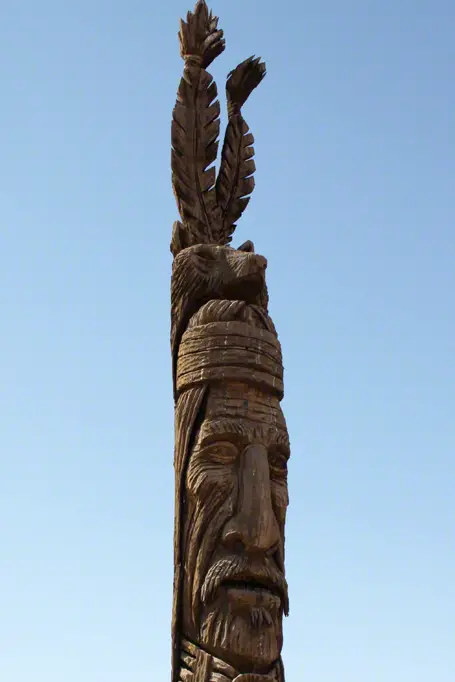
The “Trail of Whispering Giants” project began in 1972. Furthermore, Toth donates each statue to the city in which he carved it. As a result, he never requests any financial compensation for his work.
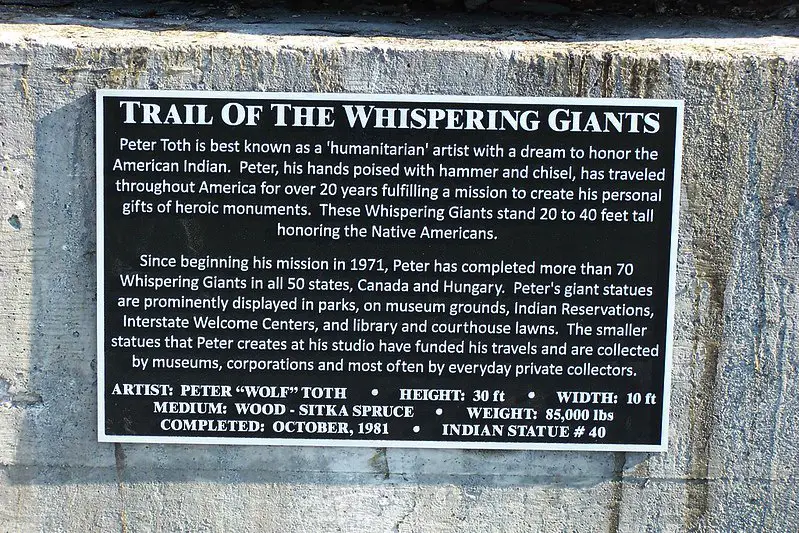
However, in exchange for the art, Toth asks the city to pay for the raw materials used during the project, along with lodging and living expenses. Also, each statue is between 8 to 10 feet tall, and art collectors regularly appraise the statues at about $250,000 each. Unfortunately, several statues recently incurred damage. As a result, the level of destruction, in some cases, resulted in the removal of the statues.
These iconic giants are all an important piece of Route 66 history and American memorabilia. Be sure to capture a photo with each one.
We Need Your Help
Did you find this article helpful? If so, bookmark it and when you’re planning your next vacation click on any of the links below before finalizing reservations. You’ll get the best price, we’ll earn a small commission, and you’ll help support future articles.
Thank you!
BEST TRAVEL SEARCH ENGINES
🏘️ Book Accommodation
We use Tripadvisor to compare prices and reviews in advance and check availability
✈️ Book Your Flight
To find the cheapest flight options, use Skyscanner to find the most suitable choice for you
🚗 Reserve Rental Car
Use Discover Cars to compare prices and view the largest selection of vehicles

